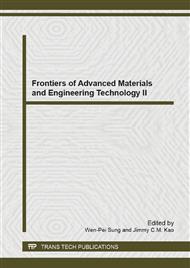p.711
p.715
p.723
p.727
p.732
p.736
p.740
p.744
p.748
Research on Chip Formation Mechanism in Mold Processing of Large Diameter Fresnel Lens
Abstract:
This paper describes the analysis of the chip formation mechanism in mold machining process of large diameter Fresnel lens based on the ABAQUS finite element simulation software and modal test methods. Combined with the material constitutive relation and material failure criteria etc, a two-dimensional orthogonal cutting model was established and the chip derived from the simulation was compared with the chip from modal test, with a consequent verification of the feasibility of simulation chip model. The simulation contributes to an investigation into the effects of the cutting speed on chip formation process. The results show that: the material strength and plastic brittle have significant impact on chip morphology in the H62 brass mold processing, and material strength will improve with the increase of strain rate, the evolution process of the chip of material plastic reduction can be divided into: ribbon cuttings, serrated chips, cell chips.
Info:
Periodical:
Pages:
732-735
Citation:
Online since:
April 2014
Authors:
Price:
Сopyright:
© 2014 Trans Tech Publications Ltd. All Rights Reserved
Share:
Citation:


